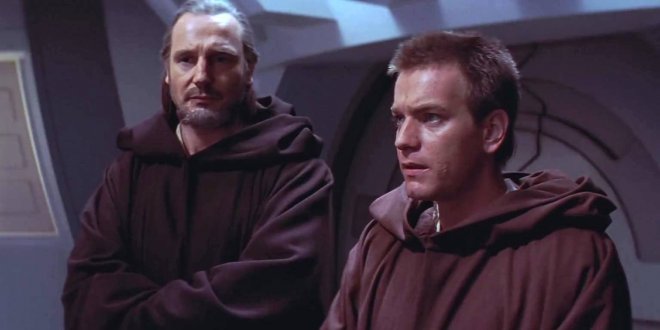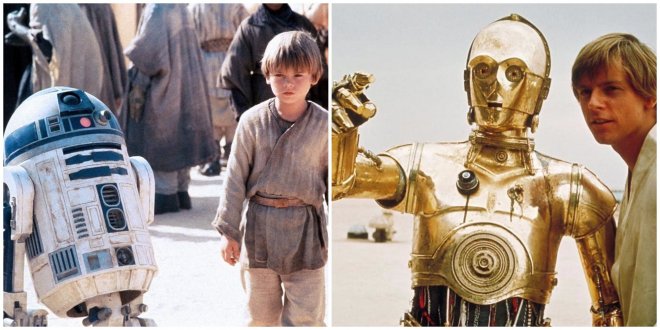
Star Wars: Episode I – The Phantom Menace brought plenty of new elements to the franchise, but there were many ways it lifted straight from the original trilogy. George Lucas designed each movie in the prequel trilogy to parallel the original Star Wars films, that way they would rhyme – like poetry. This was made clear right from the start of The Phantom Menace thanks to callbacks to the original movies, some of which were obvious and others more subtle. As a result, Lucas was able to strike a balance between old and new, making each trilogy feel distinct, yet connected, as part of a larger saga.
While certain parallels between the two trilogies may be a coincidence, there's a great deal of evidence to suggest that even the most minor details were crafted intentionally by Lucas. The popular Star Wars ring theory analyzed the prequels through this lens, drawing attention to moments big and small throughout the movies that connect each Star Wars era. This would mean that The Phantom Menace would have a number of callbacks to both A New Hope and Return of the Jedi, but there are a few references to The Empire Strikes Back, as well. Here are five ways that The Phantom Menace lifted from the original Star Wars trilogy.
Dialogue References To The OT  One of the most recognizable references to the OT throughout The Phantom Menace is the dialogue. From Obi-Wan Kenobi's "I have a bad feeling about this" at the beginning, Nute Gunray's "Close the blast doors!," and Yoda's "Our own counsel we will keep…," The Phantom Menace is packed with lines lifted straight from the OT. There are plenty of subtle dialogue references as well, including Anakin Skywalker asking Qui-Gon Jinn "Are you alright?" just as Luke Skywalker would eventually ask Ben Kenobi in A New Hope. Another is Queen Amidala saying she won't wait on a committee, which mirrors a Han and Leia exchange in The Empire Strikes Back.
One of the most recognizable references to the OT throughout The Phantom Menace is the dialogue. From Obi-Wan Kenobi's "I have a bad feeling about this" at the beginning, Nute Gunray's "Close the blast doors!," and Yoda's "Our own counsel we will keep…," The Phantom Menace is packed with lines lifted straight from the OT. There are plenty of subtle dialogue references as well, including Anakin Skywalker asking Qui-Gon Jinn "Are you alright?" just as Luke Skywalker would eventually ask Ben Kenobi in A New Hope. Another is Queen Amidala saying she won't wait on a committee, which mirrors a Han and Leia exchange in The Empire Strikes Back.
The Phantom Menace even stays consistent with alien languages that were introduced in the OT, most notably Jabba the Hutt's language of Huttese on Tatooine. Sebulba frequently uses the term "Poodoo" to insult Anakin and express frustration, just like Jabba did in Return of the Jedi. Another small attention to detail is in Anakin's first exchange with Sebulba, where he notes that Sebulba would have to pay for him if he got hurt. Anakin uses the term "Moolee-rah," a Huttese verb for payment, which is the same word Jabba used in A New Hope's special edition when asking why Han hadn't paid him back.
Anakin's Hero's Journey vs. Luke's  Another of Lucas' intentional parallels was the similarities between Anakin and Luke Skywalker's hero's journeys. Lucas was greatly inspired by Joseph Campbell's The Hero with a Thousand Faces when creating Star Wars, which laid out a basic pattern that most heroes tend to follow in every form of mythology. Luke followed this pattern throughout the OT, starting as an ordinary young man who gradually grows into a great Jedi who helps redeem his father. Anakin followed a very similar path, starting on Tatooine before setting off to become a Jedi, fighting in battle to destroy a space station just like Luke in A New Hope.
Another of Lucas' intentional parallels was the similarities between Anakin and Luke Skywalker's hero's journeys. Lucas was greatly inspired by Joseph Campbell's The Hero with a Thousand Faces when creating Star Wars, which laid out a basic pattern that most heroes tend to follow in every form of mythology. Luke followed this pattern throughout the OT, starting as an ordinary young man who gradually grows into a great Jedi who helps redeem his father. Anakin followed a very similar path, starting on Tatooine before setting off to become a Jedi, fighting in battle to destroy a space station just like Luke in A New Hope.






